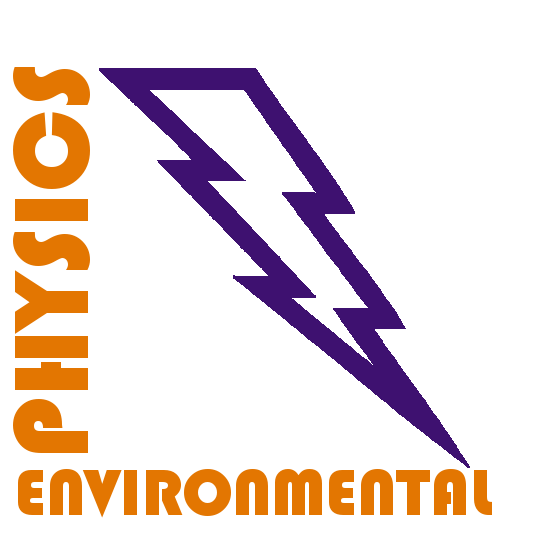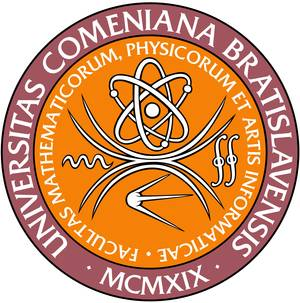Citácie: | 1.) | S. Wang, D. Z. Yang, R. Zhou , Z. Fang, W. Wang, K. Ostrikov: Mode transition and plasma characteristics of nanosecond pulse gas–liquid discharge: Effect of GROUNDING CONFIGURATION, Plasma Process. Polym. 17, e1900146 (2020), WoS
(2020)
------------- | | 2.) | A. Brisset: Physique des décharges nanosecondes diffuses générées sous champs extrêmes, PhD thesis, Université Paris Saclay, cit. 43
(2019)
------------- | | 3.) | S. Wang, F. Liu, D. Yang, W. Wang, and Z. Fang, Characteristic study of a transient spark driven by a nanosecond pulse power in atmospheric nitrogen using a water cathode, J. Appl. Phys. 125, 043304 (2019), WoS
(2019)
------------- | | 4.) | Barkhordari A., Ganjovi A.: Technical characteristics of a DC plasma jet with Ar/N2 and O2/N2 gaseous mixtures. Chinese J. Physics 57, 465-478 (2019), WoS, SCOPUS
(2019)
------------- | | 5.) | Cimerman R., Rackova D., Hensel, K.: Tars removal by non-thermal plasma and plasma catalysis. J. Physics D-Applied Physics 51 (27) 274003 (2018), WoS, SCOPUS
(2018)
------------- | | 6.) | Nakagawa Y, Ono R., Oda T.: Effect of discharge polarity on OH density and temperature in coaxial-cylinder barrier discharge under atmospheric pressure humid air. Japanese J. Applied Physics, 57 (9) 096103 (2018), WoS, SCOPUS
(2018)
------------- | | 7.) | Barkhordari A., Ganjovi A., Mirzaei I., Falahat A.: Study of the physical discharge properties of a Ar/O2 DC plasma jet. Indian J. Physics 92 (9) 1177-1186 (2018), WoS, SCOPUS
(2018)
------------- | | 8.) | Barkhordari A., Ganjovi A., Mirzaei I., Falahat A., Rostami Ravari M.N.: A pulsed plasma jet with the various Ar/N2 mixtures. J. Theoretical Applied Physics 11 (4) 301-312 (2017), WoS, SCOPUS
(2017)
------------- | | 9.) | Zou N; Gu K.; Liu, S.; et al.:
Rapid analysis of pesticide residues in drinking water samples by dispersive solid-phase extraction based on multiwalled carbon nanotubes and pulse glow discharge ion source ion mobility spectrometry, JOURNAL OF SEPARATION SCIENCE 39, 1202-1212 (2016) SCI cit. 27
(2016)
------------- | | 10.) | S. Li, I. Timoshkin, M. Maclean, et al., Oxidation and Biodecontamination Effects of Impulsive Discharges in Atmospheric Air, IEEE Trans. Plasma Sci. 44, 2145-2155 (2016), WoS
(2016)
------------- | | 11.) | W. Yang, R. Zhu, B.C. Ma: Repetitively Pulsed Discharges Ignited in Microchannels Between Two Nonequally Broad Planar Electrodes and Their Charging for Nanoscale Aerosol Particles, IEEE Trans. Plasma Science 44(6): 944-949 (2016), WoS
(2016)
------------- | | 12.) | Dvonč L., Janda M.: Study of transient spark discharge properties using kinetic modeling, IEEE Trans. Plasma Phys. 43 (8), 2562-2570 (2015), SCI cit. 11
(2015)
------------- | | 13.) | Kim H.H., Teramoto Y., Negishi N., Ogata A.: A multidisciplinary approach to understand the interactions of nonthermal plasma and catalyst: A review. Catalysis Today 256 (2015) 13-22, SCI
(2015)
------------- | | 14.) | Zou D., Yang Y., Pei X., Qaisrani M.H., Lu X.: Hybrid simulation of interaction between airflow and plasma induced by electron beam. IEEE Trans.Plasma Science, 43 (10) 3620-3625 (2015), WoS
(2015)
------------- | | 15.) | Gerling T et al., On the spatio-temporal dynamics of a self-pulsed nanosecond transient spark discharge: a spectroscopic and electrical analysis, Plasma Sources Sci. Technol. 22 (2013) 065012
(2013)
------------- | | 16.) | Trushkin A. N.; Kochetov I. V.: Simulation of toluene decomposition in a pulse-periodic discharge operating in a mixture of molecular nitrogen and oxygen, PLASMA PHYSICS REPORTS 38 (2012) 407-431
(2012)
------------- | | 17.) | Vandenbroucke A.M., Morent R., De Geyter N., Leys C., Decomposition of trichloroethylene with plasma-catalysis: A review, Journal of Advanced Oxidation Technologies (2011) 14 (1) 165-173, citation 20
(2011)
------------- | | 18.) | Yukhymenko V. V.; Chernyak V. Ya.; Olszewski S. V.; Sidoruk S. M.; Demchina V. P.; Levko D. S.; Shchedrin A. I., PLASMA REFORMING OF ETHANOL IN DGCLW DISCHARGE, Problems Atom. Sci. Technol. 1 (2011) 101-103, SCI cit.
(2011)
------------- | | 19.) | Kim HH; Ogata A: Gas-to-Particle Conversion in Surface Discharge Nonthermal Plasmas and Its Implications for Atmospheric Chemistry, SENSORS 11 (2011) 2992-3003, SCI cit.
(2011)
------------- | | 20.) | D.V.Kudin, V.I.Golota, S.V. Rodionov: OXIDATION OF HYDROCARBON IMPURITIES IN A BARRIERLESS DISCHARGE AT ATMOSPHERIC PRESSURE, Uzhhorod University Scientific Herald. Series Physics. Issue 29 (2011)
(2011)
------------- | | 21.) | Golota VI, Zavada LM, Kotykov OV, et al.: METHANOL AND ETHANOL VAPOUR CONVERSION IN GAS DISCHARGE WITH STRONGLY NON-UNIFORM DISTRIBUTION OF ELECTRIC FIELD ON ATMOSPHERIC PRESSURE, Problems Atom. Sci. Technol. 4 (2010) 199-203, SCI; SCOPUS
(2010)
------------- | | 22.) | Golota VI, Zavada LM, Kotykov OV, et al.: Decomposition of dichloroethane vapor in barrierless discharge, Problems Atom. Sci. Technol. 6 (2010) 182-184, SCI
(2010)
------------- | | 23.) | V.A. Bityurin, E A Filimonova, G.V. Naidis: Simulation of Naphthalene Conversion in Biogas Initiated by Pulsed Corona Discharges, IEEE Trans. Plasma Sci. 37 (2009) 911-919
(2009)
------------- | | 24.) | G.V. Naidis: Simulation of streamer-induced pulsed discharges in atmospheric-pressure air, Eur. Phys. J. Appl. Phys. 47, (2009) 22803
(2009)
------------- | | 25.) | C. Dong, W.G. Wang, H.Y. Li: Atmospheric pressure air direct current glow discharge ionization source for ion mobility spectrometry, Analyt. Chem. 80 (2008) 3925-3930
(2008)
------------- | | 26.) | R. Barni, A. Quintini, M. Piselli, C. Riccardi: Experimental study of hydrogen plasma reforming by intermittent spark discharges, J. Appl. Phys. 103 (2008), Article no. 063302
(2008)
------------- | | 27.) | G.V. Naidis: Simulation of streamers and sparks in air, 11th Int. Symp. High Pres. Low Temp. Plasma Chemistry HAKONE XI, Oleron, France, 7-12 September 2008, p. 8-12
(2008)
------------- | | 28.) | R. Morent, C. Leys, J. Dewulf, D. Neirynck, J. Van Durme, H. Van Langenhove: DC-excited non-thermal plasmas for VOC abatement, J. Advanced Oxid.Technol. 10 (2007) 127-136
(2007)
------------- | | 29.) | V.A. Bityurin, E A Filimonova, G.V.Naidis: Mechanisms of conversion of heavy hydrocarbons in biogas initiated by pulsed corona discharges, in S. Guceri; A. Fridman A: PLASMA ASSISTED DECONTAMINATION OF BIOLOGICAL AND CHEMICAL AGENTS, Book Series: NATO Science for Peace and Security Series A - Chemistry and Biology (2007), 135-142 (Conference of the NATO-Advanced-Study-Institute on Plasma Assisted Decontamination of Biological and Chemical Agents, Cesme-Izmir, Turkey, Sep. 2007)
(2007)
------------- | | 30.) | V.A. Bityurin, E A Filimonova, G.V.Naidis: Mechanisms of conversion of heavy hydrocarbons in biogas initiated by pulsed corona discharges, 18th Int. Symp. Plasma Chemistry, Kyoto, Japan, 26-31 August 2007, paper 619, 31b-a6
(2007)
------------- | | 31.) | Barni R., Zanini S., Siliprandi R., Esena P., Riccardi C. (2007) Trends in plasma applications. In Proceedings of the 3rd International Conference on the Frontiers of Plasma Physics and Technology (PC/5099) (Vol. 2, p. 3), cit. 9
(2007)
------------- | | 32.) | J.P. Borra: Nucleation and aerosol processing in atmospheric pressure electrical discharges: Powders production, coatings and filtration, J. Phys. D: Appl. Phys. 39 (2006) R19-R54
(2006)
------------- | | 33.) | R. Barni, R. Benocci, C. Broggi, C. Riccardi: Chemical kinetics of an argon/methane plasma in a hydrogen reforming reactor, Eur. Phys. J. Appl. Phys. 35 (2006) 135-143
(2006)
------------- | | 34.) | V.A. Bityurin, E A Filimonova, R A B P Kerst, G V Naidis, A J M Pemen: The Modelling of Tar Removal from Biogas Stimulated by a Pulsed Corona Discharge, XVI Inter. Conf. Gas Discharges and Application., Xi’an (China), September 2006, 541-544
(2006)
------------- | | 35.) | M. Janda: The Study Of Plasma Induced Chemistry In Gaseous Mixture N2 -CO2 -H2O, PhD thesis, Leopold Franzens University of Innsbruck, Austria, 2006; FMFI UK Bratislava 2006, cit. [2]
(2006)
------------- | | 36.) | E. Moreno, A. Castro, V. Gallardo, J. Cotrino, A. R. González-Elipe: Hydrogen production by means of cold plasma, Proceedings International Hydrogen Energy Congress and Exhibition IHEC 2005, Istanbul, Turkey, 13-15 July 2005
(2005)
------------- |
|

